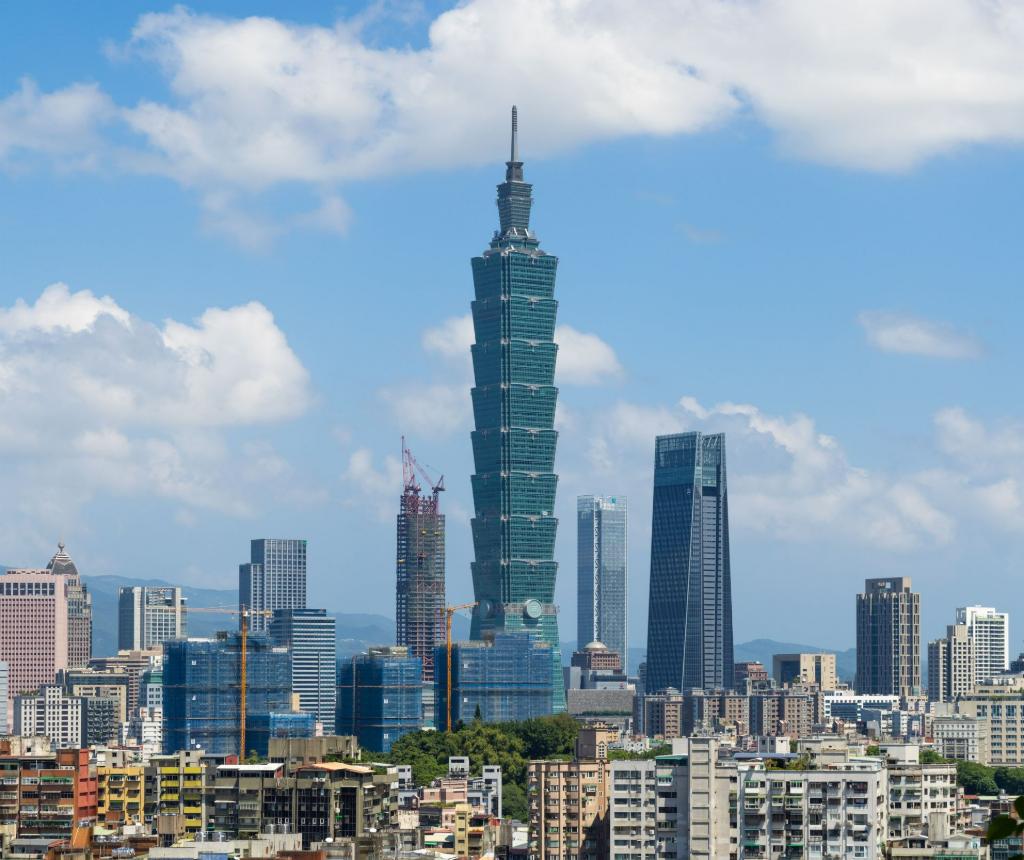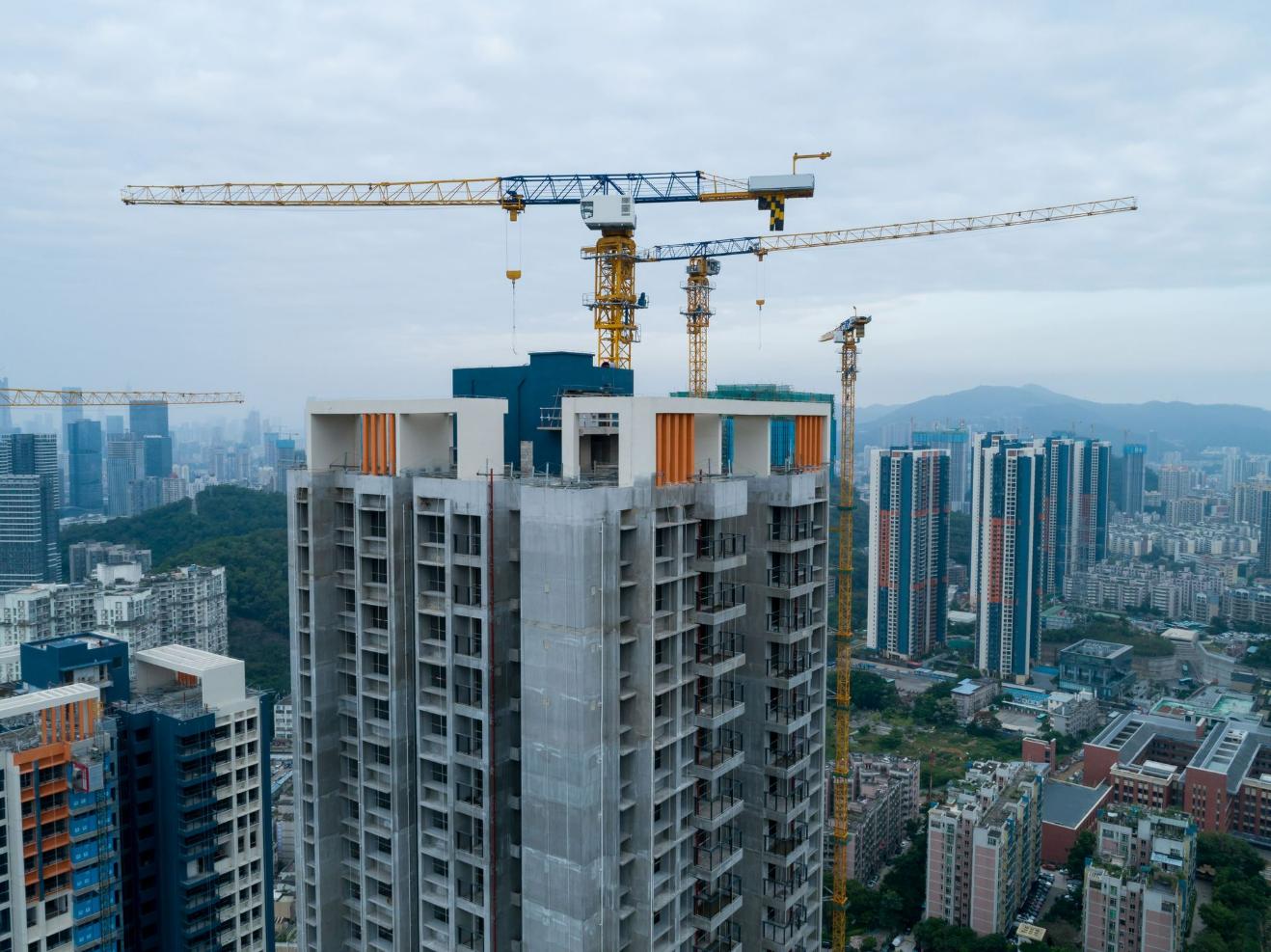Taiwan’s construction sector enters 2025 at a pivotal crossroads — facing tighter housing controls, rising construction costs, labor shortages, and the nation’s first carbon fee. Yet alongside these challenges lie transformative opportunities in public infrastructure, urban renewal, green and smart construction, and the global fastener industry.
This article breaks down the key challenges
shaping Taiwan’s construction outlook and explores where the growth
opportunities will emerge.
Table of Contents
The construction sector has long been a driving force of Taiwan’s economy, not only as a critical pillar of growth but also as the backbone of essential infrastructure. According to the Chung-Hua Institution for Economic Research (2017), construction worldwide represents about 13% of global GDP and provides jobs for roughly 7% of the world’s workforce.
In Taiwan, however, labor productivity in construction has barely improved over the past few decades — lagging behind the manufacturing sector’s 3.6% average annual growth and the overall economy’s 2.8% growth. This widening gap underscores the urgency for modernization.
Despite heightened global uncertainty, Taiwan’s economy continues to demonstrate solid resilience. According to forecasts from the Taiwan Institute of Economic Research and other leading institutions, GDP growth in 2025 is expected to remain between 2.8% and 3.15%, though growth is likely to follow a “stronger in the first half, weaker in the second” pattern.
Inflation (CPI) is projected to stay near the 2% caution level, while the central bank’s steady interest rate policy is keeping borrowing costs elevated — a challenge for both developers and homebuyers.
In practice, this means the first half of the year is set to benefit from robust demand in the AI and semiconductor sectors, driving strong export and investment performance. However, in the second half, momentum may slow due to ongoing geopolitical tensions, the escalation of the U.S.–China trade dispute, and other global uncertainties.
Taiwan’s housing market began cooling in the second half of 2024, and 2025 is expected to bring a period of lower transaction volumes and softer prices. According to market surveys, home prices could decline by 7% to 15%, particularly in regions that experienced heavy speculation in recent years.
Two factors are driving this downturn:
- Tighter Mortgage Lending: Under the central bank’s seventh round of credit controls, mortgage approvals have become more stringent. Loan-to-value ratios that buyers once expected at 70–80% have dropped to 60% or even lower. This leaves many buyers facing significant funding gaps at closing, sometimes amounting to millions of NT dollars. In addition, major public banks such as Mega Bank, Chang Hwa Bank, First Bank, and Hua Nan Bank now take two to three months to process applications, while Taiwan Cooperative Bank and Taiwan Business Bank require four to five months. Some private banks have even stopped accepting applications.
- Wave of Presale Contract Cancellations: According to 591 Real Estate data, nearly 1,000 presale contracts were canceled in Taiwan’s six major cities and Hsinchu County/City from January to May 2025 — a 60% year-over-year increase. This trend is expected to intensify in the second half of the year, with cancellations heavily concentrated in Taoyuan, Taichung, and Tainan, where presale activity had been especially active.
Taiwan’s first carbon fee came into effect in 2025, directly impacting high-emission materials such as cement and rebar.
- Cost Impact: Real estate data suggests that material prices will rise 12–13%. For example, cement may increase from NT$3,800 per ton to NT$4,300 (+13.2%), rebar from NT$23,000 to NT$25,800 (+12.1%), and glass from NT$900 per square meter to NT$1,020 (+13.3%). Overall, construction costs could rise by NT$20,000 to NT$40,000 per ping (roughly US$200–400 per m²).
- Housing Price Effect: While the initial carbon fee (NT$300–500 per ton) will have only a limited immediate impact on housing prices, government plans indicate the fee could gradually rise in the coming years. This means the ripple effect of “green inflation” will intensify after 2026, with higher costs in transportation, energy, interior finishing, and furniture expected to push housing prices up 5–8% between 2025 and 2028.
Taiwan’s construction industry continues to face a structural labor shortage. According to government statistics, job vacancy rates in construction are among the highest of all sectors. The workforce is aging, with many experienced craftsmen nearing retirement and too few younger workers entering the field, creating a gap in skills transfer.
This problem stems largely from the industry’s long-standing “3D” image — dirty, dangerous, and demanding — which discourages new entrants. Compared with neighboring countries like Japan and South Korea, Taiwan’s shortage is even more acute, as its domestic training pipeline is weaker and younger generations show less interest in construction careers.
While the government has launched the “Migrant Worker Retention Program” and approved an additional 15,000 migrant worker slots to relieve short-term pressure, the long-term solution lies in upgrading the industry itself to make construction work more attractive, efficient, and sustainable.
1. Public Infrastructure Investment
According to the Executive Yuan:
- 2025 Public Construction Budget: NT$264.4 billion, up 43.2% from 2024.
- Plus NT$57.4 billion from the Forward-looking Infrastructure Program (Phase 5).
- Total (including special funds): NT$648.3 billion — an 11.7% increase year-over-year.
- Additional NT$20+ billion for post-earthquake reconstruction in Hualien.
2. Urban Renewal & Aging Housing Redevelopment
- Over 4.83 million homes in Taiwan are 30+ years old.
- In Taipei, over 71% of housing stock is over 30 years old.
- Government incentives under the Urban Renewal and Old Building Reconstruction Act offer up to 40% floor area bonuses to speed up redevelopment.
3. Green, Smart, and Modular Construction
- Green Building: Costs are now on par with conventional materials; public projects must use at least 5% certified green materials.
- Smart Construction: Widespread use of BIM, AI, and IoT is improving site safety, project scheduling, and resource management.
- Modular Construction: Off-site prefabrication can cut construction time by 30–50% and reduce waste by up to 90% — addressing both labor shortages and sustainability goals.
Kaohsiung is the heart of Taiwan’s NT$160+ billion fastener industry, ranking as the world’s third-largest exporter.
- Competitive Edge: Highly flexible supply chains and “concierge-level” service tailored for high-spec markets such as automotive, aerospace, and advanced construction. This flexibility has helped Taiwan maintain a strong foothold in Europe, the U.S., and Japan, where demand for certified high-performance fasteners is high.
- Smart & Green Shift: Manufacturers are adopting predictive AI maintenance, eco-friendly lubricants, and other sustainable manufacturing practices — boosting efficiency, quality, and global competitiveness.
While 2025 will test Taiwan’s housing and construction sectors, strong public works spending, urban renewal momentum, and high-tech facility development provide a solid foundation for growth.
For developers and contractors, the path forward lies in embracing green building, smart technology, and modular methods to navigate cost, labor, and environmental pressures. For homebuyers, a cooling market could open the door to higher-value new homes — especially those with green building certification, resilient design, and sustainable features.
At Fong Prean, we continue to invest in smart and eco-friendly fastener solutions that support this transformation — helping the industry build stronger, safer, and greener for the future.
- Chung-Hua Institution for Economic Research (CIER), 2017 & 2025
- Taiwan Institute of Economic Research (TIER), 2025 Forecast
- Directorate-General of Budget, Accounting and Statistics (DGBAS), 2025
- Ministry of Economic Affairs (MOEA), 2025 Economic Outlook
- Central Bank of Taiwan, Credit Control Policy Updates (2024–2025)
- 591 Real Estate Market Report, May 2025

Ling Wu, Marketing Analyst
Ling Wu is a marketing analyst at Fong Prean, focusing on market research, trend insights, and content strategy. With a passion for data-driven storytelling, Ling bridges industry knowledge with actionable insights to help businesses thrive.

